This article describes steps to hide or show the Windows Security app Firewall & Network Protection section in Windows 11.
The Windows Security app is a built-in application that comes with Windows 11. It provides a centralized dashboard to see what’s happening with your device’s security and health and take any necessary actions.
The app has many sections that allow you to quickly see the status of your virus and threat protection, Firewall and network security, device security controls, and more.
The Firewall & network protection section provides settings to control who and what can access your network. Users can also use the Firewall & network protection section to turn on or off Microsoft Defender Firewall.
If you have configured your device’s security settings to suit your environment and don’t want others to change or mess with these settings, you can hide these sections from users.
On the other hand, if these sections are hidden, and you want to show them again, you can use the guide below.
How to hide or show Firewall & network protection section with Windows Security app in Windows 11
As described above, the Firewall & network protection section provides settings to control who and what can access your network. Users can also use the Firewall & network protection section to turn on or off Microsoft Defender Firewall.
Below is how to hide or show this section in Windows Security app in Windows 11.
First, open Local Group Policy Editor by clicking on the Start Menu and searching for Edit group policy, as highlighted below.
Under Best match, select Edit group policy to launch Local Group Policy Editor.
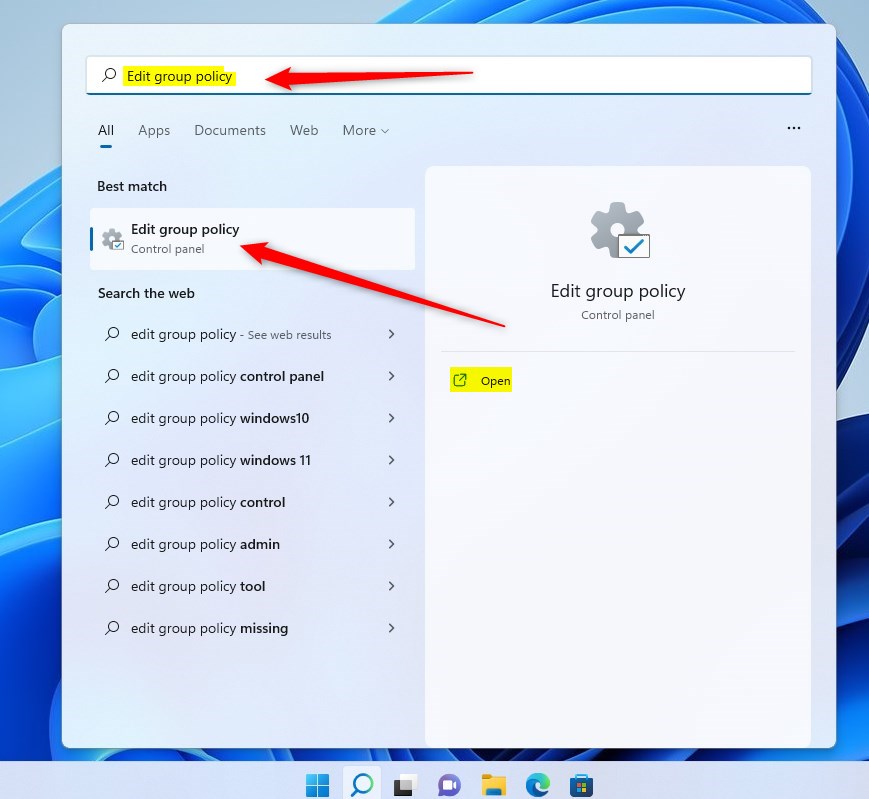
In the left pane of Local Group Policy Editor, expand the tree:
Computer Configuration > Administrative Templates > Windows Components > Windows Security > Firewall and network protection
In the Firewall and network protection details pane on the right, locate and double-click the setting that says “Hide the Firewall and network protection area.”
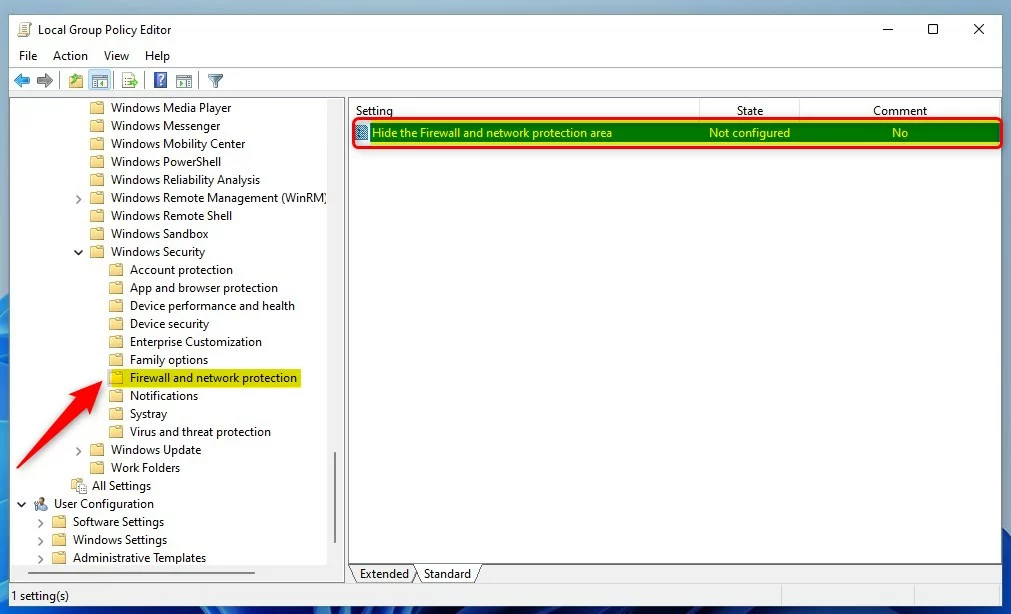
On the Hide, the Firewall and network protection area window set the option to Not Configure, Enabled, or Disabled.
- Not Configured (default)
- Enabled – The Firewall and network protection area will be hidden.
- Disabled – The Firewall and network protection area will be shown.
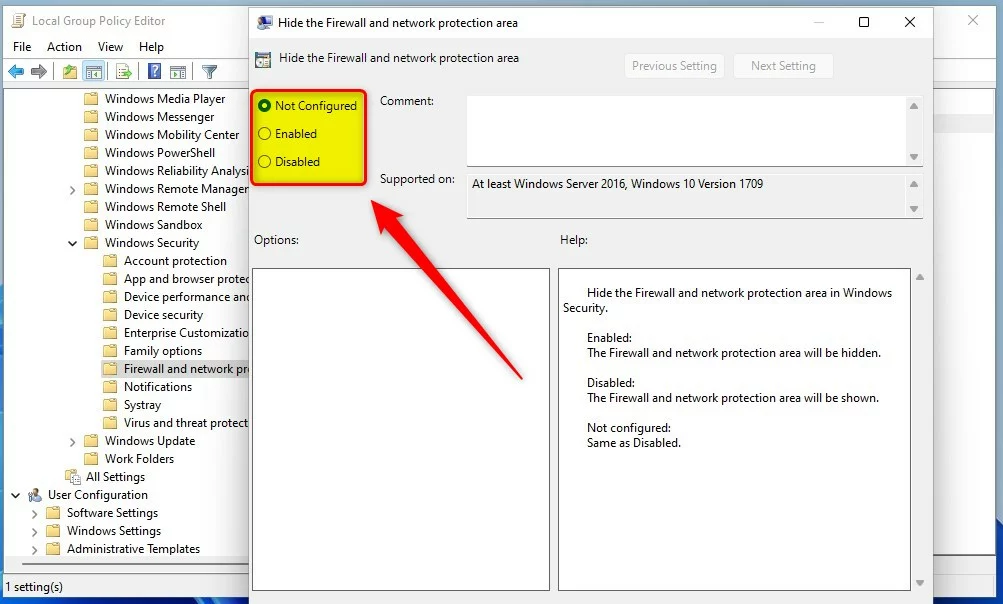
Display or hide the Firewall and network protection section in Windows Security via Windows Registry
If you can’t open the Local Group Policy Editor, you can use the Windows Registry instead.
Open the Windows Registry, and navigate to the folder key path as listed below.
HKEY_LOCAL_MACHINE\SOFTWARE\Policies\Microsoft\Windows Defender Security Center\Firewall and network protection
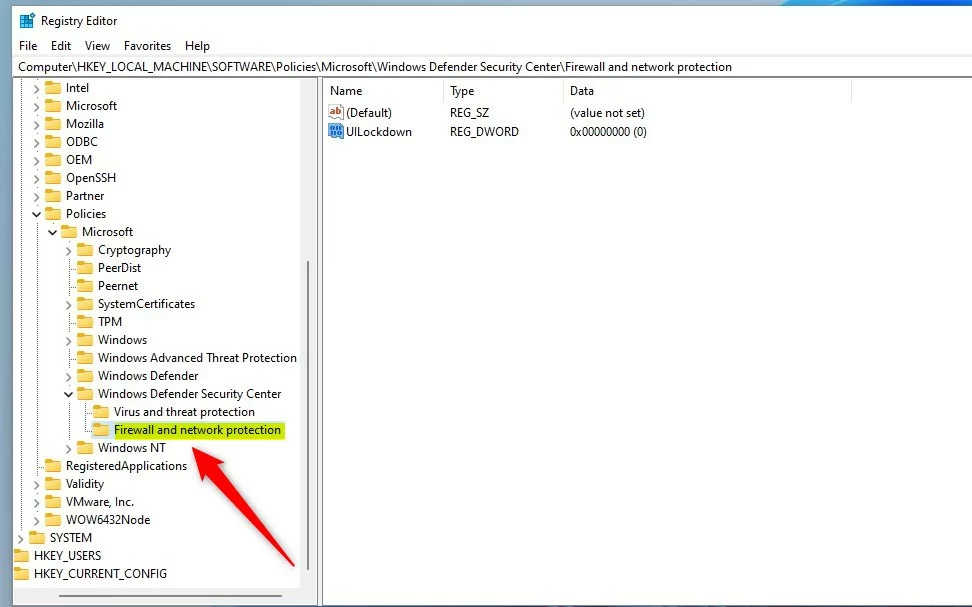
If you don’t see the Windows Defender Security Center -> Firewall and network protection folder key, right-click on the Windows key, then create both key folders.
Right-click on the firewall and network protection folder key on the right pane and select New -> DWORD (32-bit) Value. Type a new key named UILockdown.
Double-click the new key and enter the Value data as 0 to show the Firewall and network protection section in Windows Security app.
A Value data of 1 will hide the Firewall and network protection section in the Windows Security app.
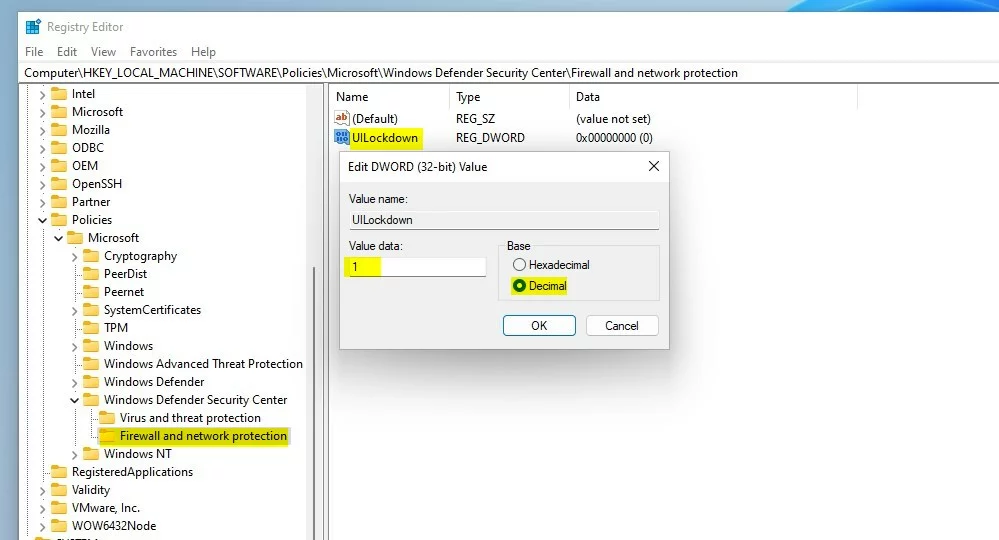
Restart your computer, and the Firewall and network protection section will be hidden or displayed.
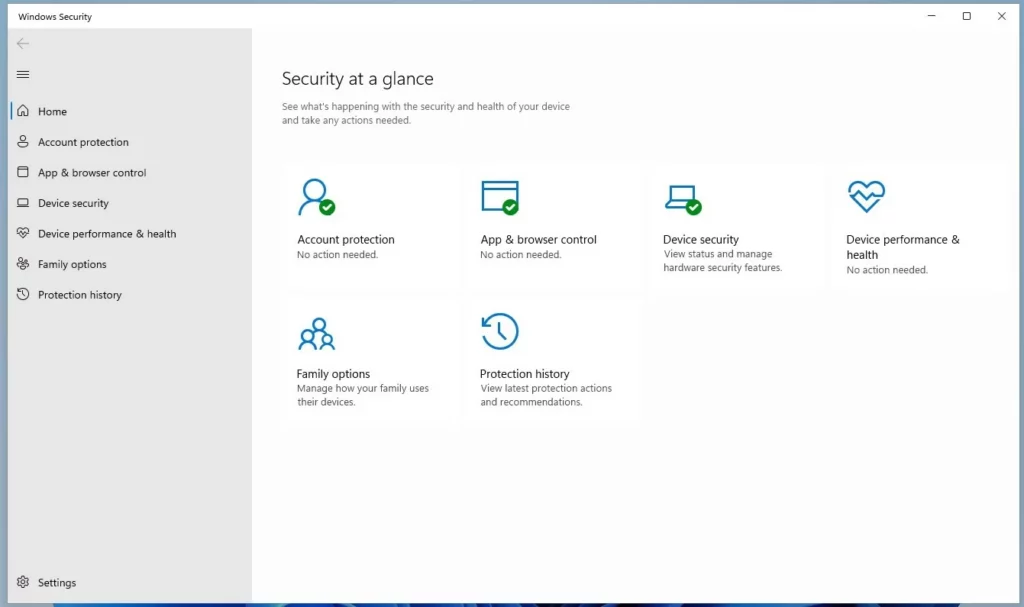
That should do it!
Reference:
Conclusion:
- The Windows Security app’s Firewall & network protection section is a crucial feature for controlling network access and managing Microsoft Defender Firewall.
- You can hide or show the Firewall & network protection section using the Local Group Policy Editor or the Windows Registry.
- These steps will help you control your device’s security settings and prevent unauthorized changes.
- If you encounter any issues or have additional insights, please use the comment section for further discussions.

Leave a Reply Cancel reply